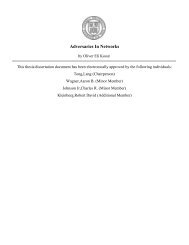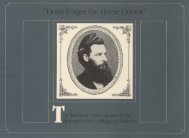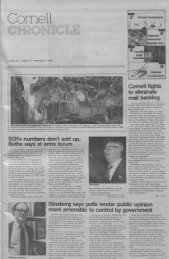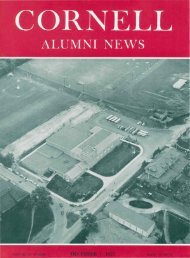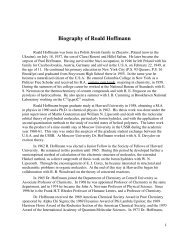Preliminary pages FINAL.pdf - eCommons@Cornell - Cornell ...
Preliminary pages FINAL.pdf - eCommons@Cornell - Cornell ...
Preliminary pages FINAL.pdf - eCommons@Cornell - Cornell ...
Create successful ePaper yourself
Turn your PDF publications into a flip-book with our unique Google optimized e-Paper software.
PREFACE<br />
I became interested in historic recordings almost fifteen years ago, while I was<br />
a Master’s student in voice at Manhattan School of Music, taking a graduate seminar<br />
from Will Crutchfield. We had been listening to a recording of Loewe’s “Canzonette”<br />
sung by Elly Ameling, who had long been one of my favorite singers. Although I<br />
hadn’t heard that particular recording before, it sounded comfortably familiar: the<br />
voice lovely and clear, and the delivery rhythmically precise, each note distinctly<br />
articulated (1988; CD 1, track 1).<br />
So I was completely unprepared for what happened next. Crutchfield played<br />
two more versions of “Canzonette” by singers I’d never heard of – Hulda Lashanska<br />
and Elisabeth Rethberg – and asked us to pay attention to portamento and rubato. The<br />
contrast between their performances and Ameling’s was shocking. Lashanska and<br />
Rethberg sang with such limpid line and such breathtaking ease (as does soprano<br />
Alma Gluck, whose 1916 recording I have excerpted here: CD 1, track 2). Suddenly,<br />
Ameling’s performance sounded labored and unmusical. I was at once devastated and<br />
thrilled. On the one hand, I imagined I’d never be able to listen to Ameling again –<br />
but on the other hand, Lashanska’s and Rethberg’s singing was inspiring. I wanted to<br />
understand everything about how they did what they did.<br />
I soon learned that there were commonly accepted generalizations about vocal<br />
style on early recordings. For example, singers used to sing with more rhythmic<br />
flexibility, and also more portamento. They had, on average, better legato and<br />
coloratura. They weren’t always faithful to the score. These observations are mostly<br />
accurate – but they only begin to brush the surface of what old recordings can tell us<br />
about singing and style. If we listen further, we find that the details beneath such<br />
generalizations have much to say not only about what vocal style is (or was), but also<br />
xxii




